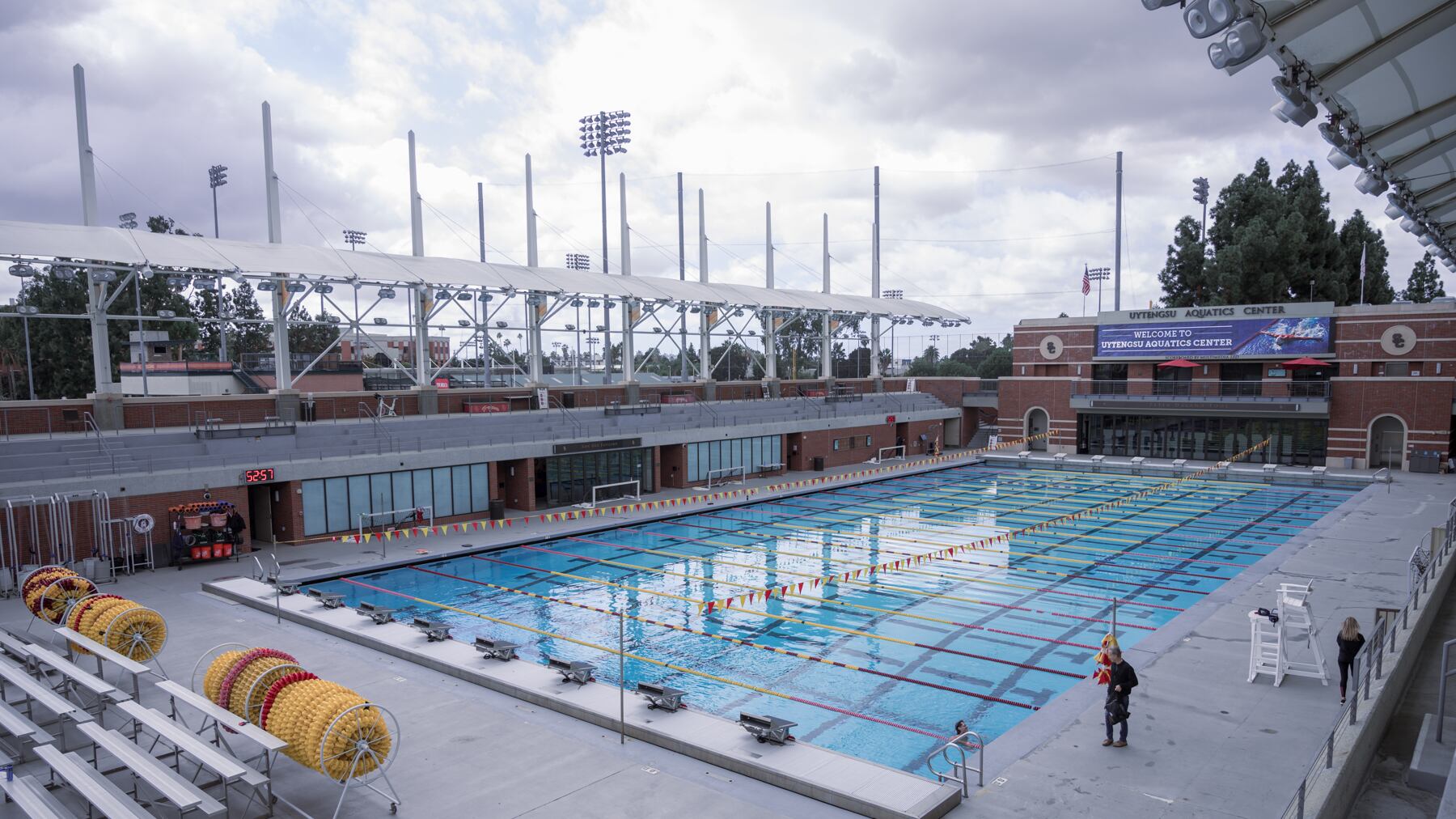Club sports at USC may be back, but most teams are hardly functioning like they once did. COVID-19 protocols imposed on practices by USC Recreational Sports and Student Affairs in August are forcing club teams to get creative with how they practice and foster community among their members.
Marcus Leher, senior and president of Swim Club at USC, mentioned one of the most significant struggles their team faced when returning to campus this fall was capacity restrictions limiting the size of their practices.
“We were planning a full return—that was kind of communicated to us—and then, three days before our first practice, [USC’s Recreational Club Council said] we can only have seven people,” Leher said. Swim practices are usually held at the Uytengsu Aquatics Center, which has had an official capacity of five swimmers in the pool at one time since August.
Because of this, the club halted practices for seven weeks since school started before the Recreational Club Council (RCC)—which oversees all USC club sports—allowed them to resume with 20 people per practice, according to Leher.
Capacity restrictions aren’t the only struggles club teams have been facing while adjusting back to in-person activities.
Jared Zhao, a senior and president of Dragon Boat at USC, noted that at the beginning of the semester their boats could only be filled to half-capacity due to social distancing. For a club with dozens of members, these restrictions severely limited members’ ability to gain the technique and skill dragon boating—a team sport—requires. But thanks to more compromise from RCC, Dragon Boat was also able to fully load their boats again after just a few weeks, as long as their members were vaccinated.
“At the beginning of all this, we weren’t even sure if we were going to have in-person practices just because of the restrictions,” Zhao said. “But pretty soon after the semester started, they were like, ‘It’s all good. You can fully load up as long as everyone is vaccinated,’ and so there never been any issues.”
An increasing amount of interest in joining teams extended to most club sports this year, but it was difficult for some teams to weigh the interest with against capacity restrictions.
“There’s an exponential inflow of interest…we’ve never experienced such a high amount of interest before, so it was tough in the beginning to take everything in and also work with the restrictions,” said Badminton Club President Rui Qi He.
Due to the imposed capacity restrictions on USC recreational facilities, including the Uytengsu Aquatics Center and the Lyon Center, many club sports have had to split their practices into multiple days or time slots to accommodate all of their members, creating rifts in the communities usually built during practices.
The Badminton Club is one victim. The team previously had open-gym style practices that allowed nearly twice as many members to practice at once. However, USC gyms are currently limited to 30 people at a time, forcing the club to trim their practices into one of two 30-person time slots to ensure more members can attend practice.
The slots fill up within minutes.
“Before, as the president, I can sort of manage and play at the same time during practice. But now I have to be at the door, in case anyone comes in, [or] sneak by,” Qi He said. “And in order to accommodate more people, we try to split the practice into two.”
Because of the fragmented practice times, the communities usually formed in club sports have also taken a hit. Bonding time is limited and teams aren’t able to spend as much time together outside of practice. Now they must take time outside of their practices to connect.
“I think we’re definitely more social as a club, so that’s been a bigger aspect–before, we were a lot more focused on the athletics alone,” Zhao said. “I think just trying to navigate a mix of those two things, the social aspect and the competitive athleticism, is definitely going to be a challenge, but I’m optimistic that we’ll make it work.”
